
No visit to England is complete without sampling at least a few of the country's many beautiful historic market towns that are scattered throughout its landscape. These highly important market towns were often the central hub of any region of England, where local farmers and tradesmen from all over the area and beyond, came to sell their livestock and produce.
The towns were often built close to a busy crossroads, river, or under the protection of a local castle, and were formed with wide central streets offering plenty of room for a 'Market Square' where traders would set up stall. These busy market squares also often had a traditional 'Market Cross' which was erected to offer God's blessing on the surrounding trade.
All this trade often brought in much wealth for the towns themselves, which is reflected in the beautiful period buildings they had built, many of which still stand immaculately preserved today, in the form of houses, shops, old coaching inns, town halls, and of course the fine local churches.
Below is a list of 20 of the best Market towns in England for you to explore, however, we list many more (over 150) beautiful examples of England's Market Towns in our full towns and villages directory here.
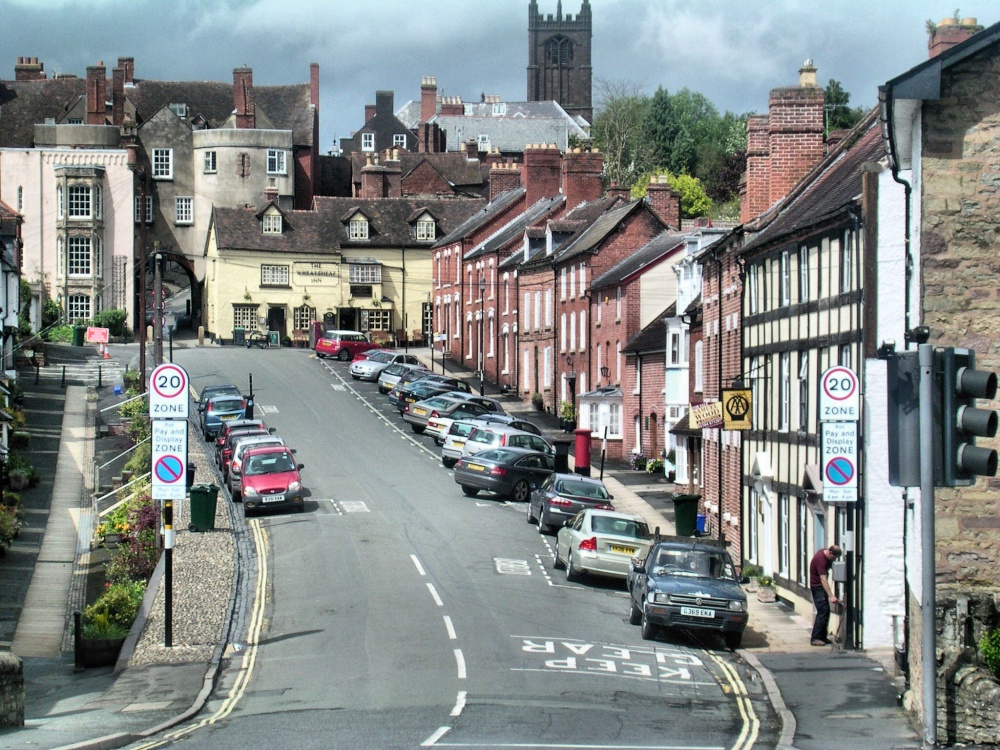
A view of Ludlow - Image by PicturesOfEngland.com member Peggy Cannell (view gallery)
Nestling on the banks of the rivers Corve and Theme Ludlow is a joyous town to visit at any time of year. There are many buildings of early origin and soaring above them all can be seen the 135ft tower of the towns 15th century parish church. The continuing prosperity of Ludlow owes much to the fine Georgian architecture evidenced at its best in Broad Street which is strewn with wonderful dwellings from that great architectual period. Two very fine black and white properties are the 17th century Feathers Hotel (where tea by a roaring log fire is definately not to be missed) and the Readers House. It is thought that Ludlows earliest building is the castle which from as early as 1085 occupied a strategic position in the contentious boarder country known as the Marcher Lands.
ID#216
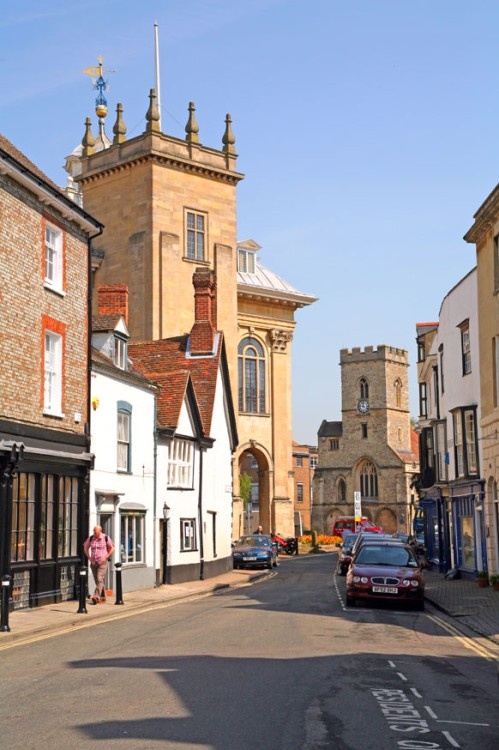
A picture of Abingdon - Image by PicturesOfEngland.com member Ima Von Wenden (view gallery)
One of Britain's oldest towns, Abingdon in the county of Oxfordshire developed around the gates of an abbey founded in 675.
ID#9
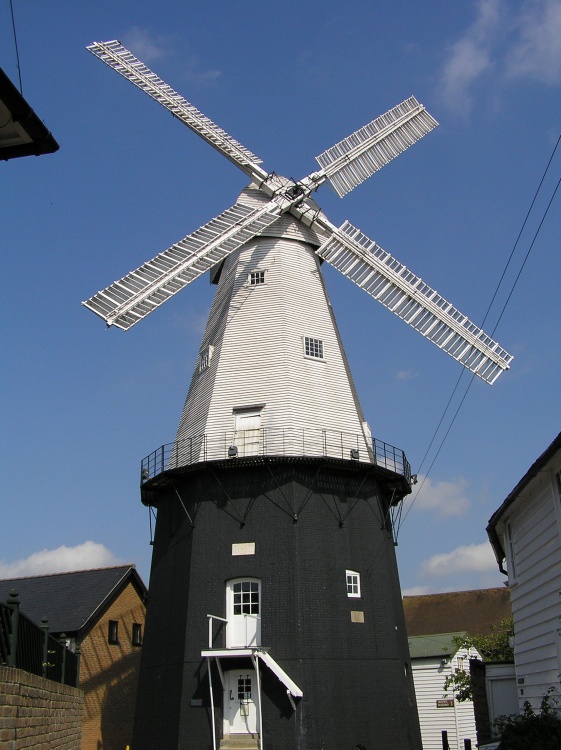
Built in 1814. Union Windmill is the finest working Smock windmill in England, Cranbrook, Kent - Image by PicturesOfEngland.com member Hilary Hoad (view gallery)
Cranbrook is an old rural town of numerous streets and alley's, all still true to their medieval layout. It is a real "showcase" for a rich variety of properties displaying typical Wealden features, weatherboarding, stucco and timber framing, with the origins of many of the buildings lying deep in 15th century England.
ID#29959
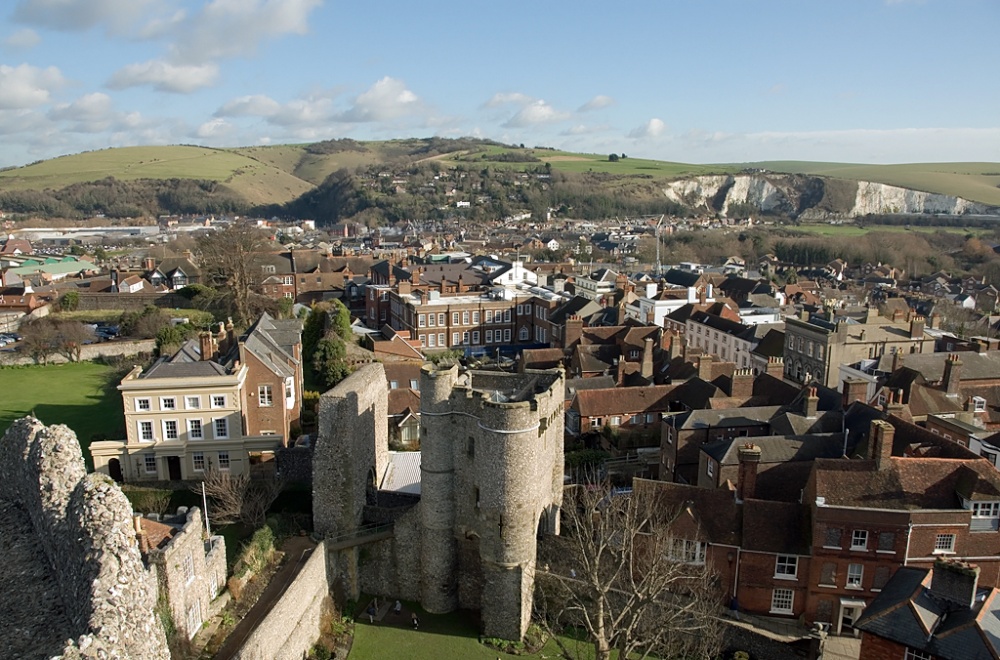
Looking East from the Castle keep, Lewes - Image by PicturesOfEngland.com member Andrew Marks (view gallery)
This very pleasant town grew up on the River Ouse. It developed on a hillside between the gap of the river and a Norman Castle built to guard that part of the South Downs. Of the great castle all that remains are the Keep and Barbican. Georgian shops line the High Street and the streets of the old town rise steeply and are interlinked by a series of narrow passage-ways, known locally as, twittens.
ID#431
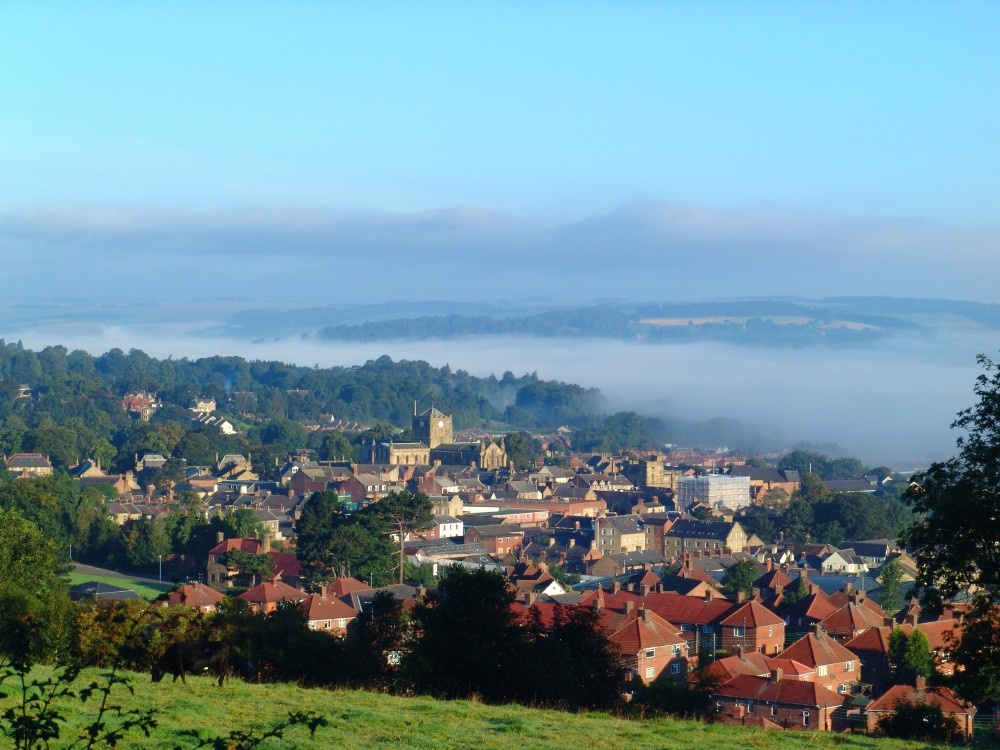
A view of Hexham in Northumberland. Fog over the River Tyne. - Image by PicturesOfEngland.com member Oliver Coats (view gallery)
Historic market town where for centuries the sheep and cattle farmers of Northumberland gathered for the Tuesday market beside Hexham Abbey. Today, the market still continues in the shadow of the abbey, with the town being noted for this and for its rich array of fine buildings
ID#7497
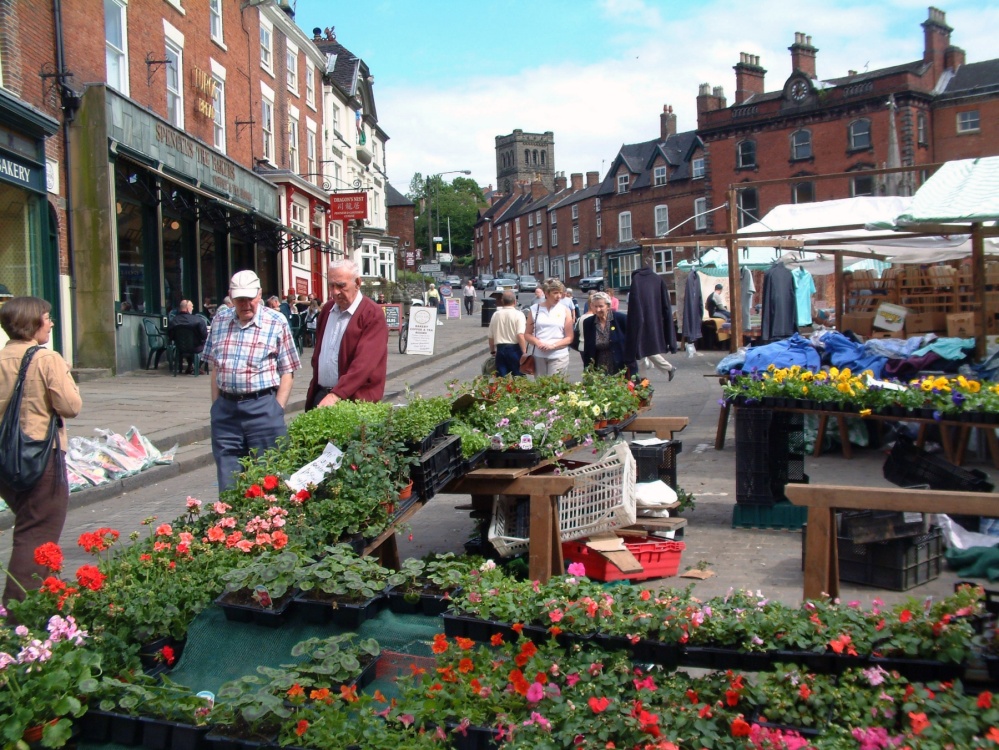
Market day in Ashbourne, Derbyshire. - Image by PicturesOfEngland.com member P. G. Wright (view gallery)
Known as 'The Gateway to the Peak District' Ashbourne was granted a market charter in 1257 and contains many historical buildings of interest. During Medieval times Ashbourne was a frequent stop for pilgrims walking 'St Non's Way' to the shrine at Dunstable in Bedfordshire.
ID#15059
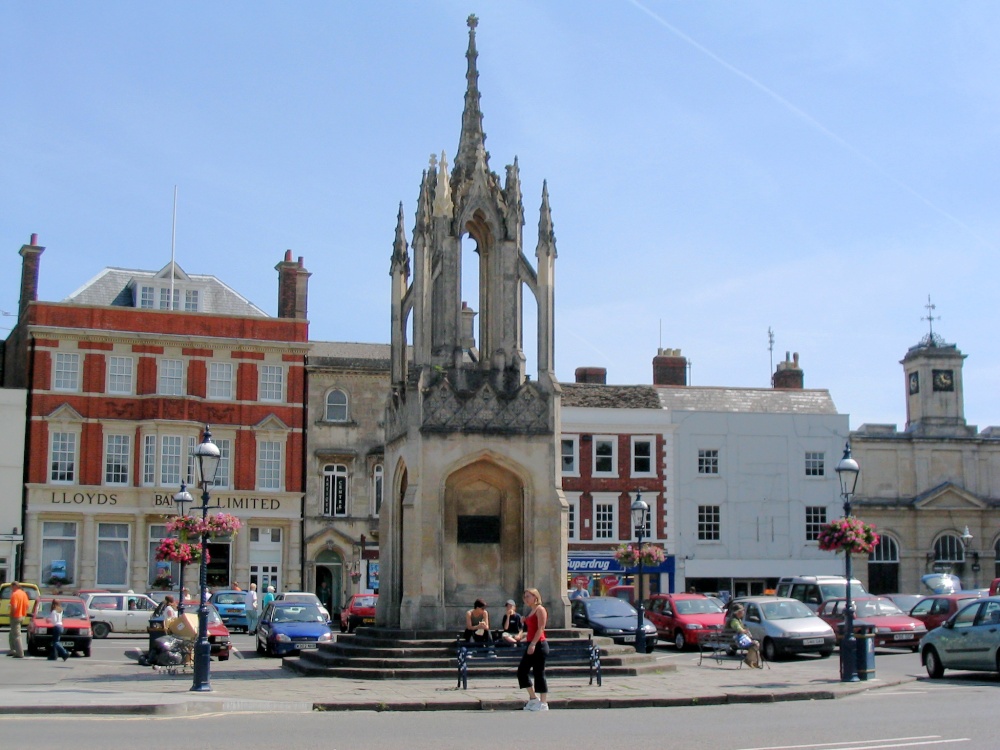
Devizes - Market Cross - June 2003 - Image by PicturesOfEngland.com member Judith Hays (view gallery)
Devizes is a small market town situate on the edge of the great expanse of Salisbury Plain. Originally bounded by three manors, hence its name - a version of 'ad divisas' meaning, at the boundary. The town shows elegant houses of the 18th-century and Tudor houses can be seen in St. John's Alley. Devizes Castle, constructed in the 19th-century, contains fragments of the earlier castle, demolished following the Civil War. The church of St.John was built in the 12th-century, for the castle. St. Mary's church was built in the town at the same time. Both churches feature fine Norman work and St.John's has a magnificent tower.
ID#28268
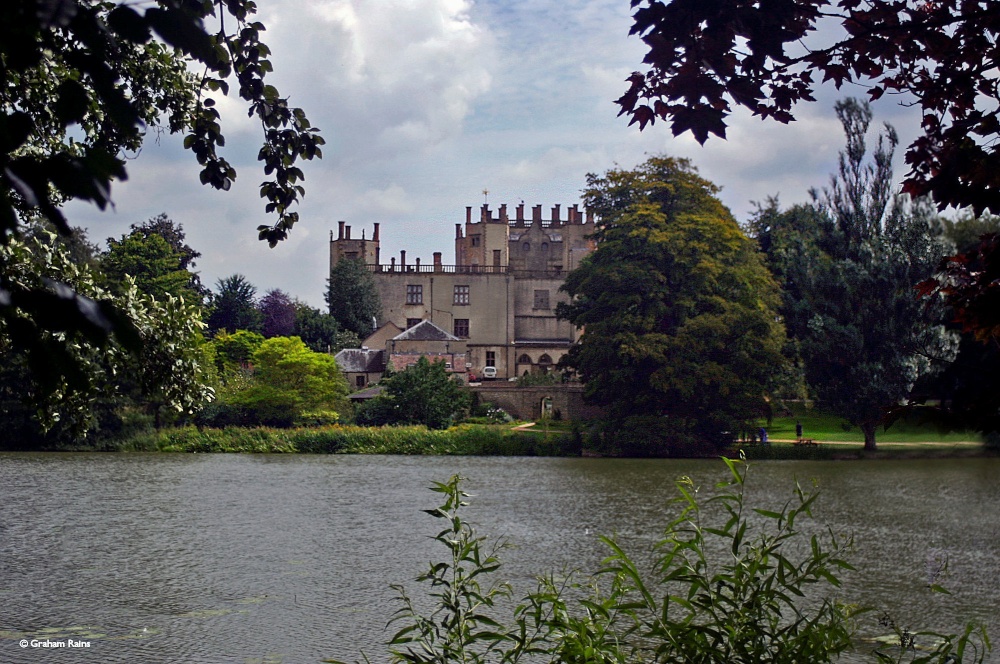
Sherborne Castle Grounds - Image by PicturesOfEngland.com member Graham Rains (view gallery)
This delightful small north Dorset town is blessed with an array of fine medieval buildings. These range from beautiful domestic Tudor properties to its fine Abbey, and two historic castles. The Abbey was begun by Roger de Caen, Bishop of Old Sarum, in the 12th century, and during the next three hundred years many additions and alterations were made until the building was finally completed in the 15th century.
ID#9513
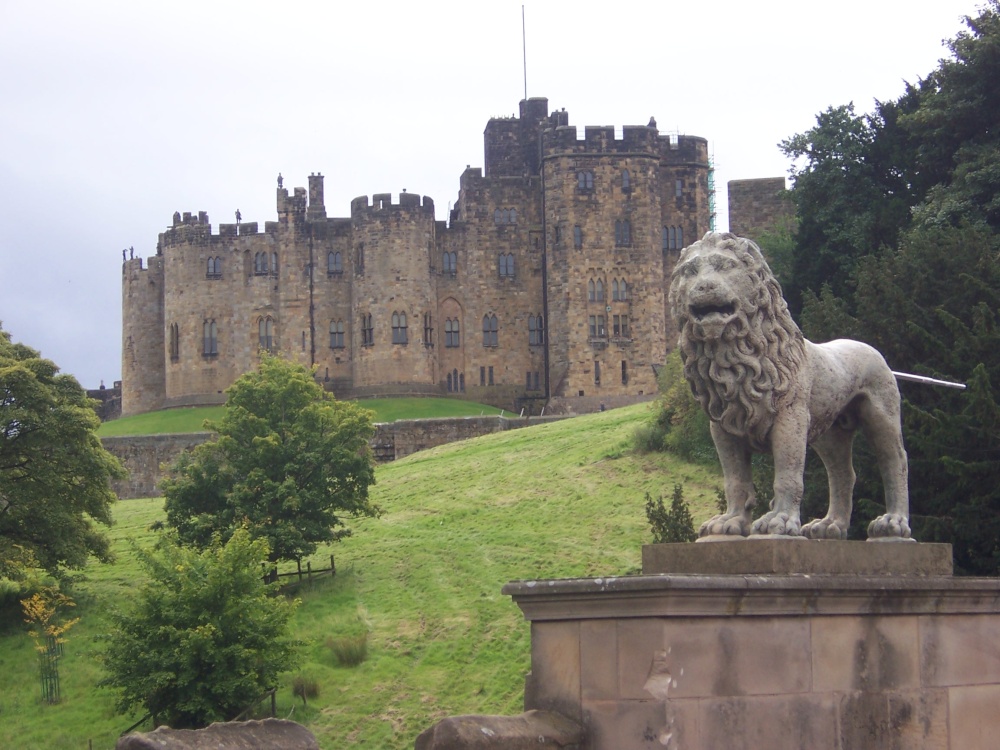
Alnwick Castle - Image by PicturesOfEngland.com member Samantha Clarke (view gallery)
Set magnificently in the heart of the beautiful northern countryside is the great castle that has dominated the life and times of Alnwick for centuries. Alnwick Castle is a Border castle and has been the home of the Percy family since the year 1309. To-day, being the second largest inhabited castle in England, Alnwick is often called the Windsor of the North and welcomes visitors from all over England and Europe.
ID#385
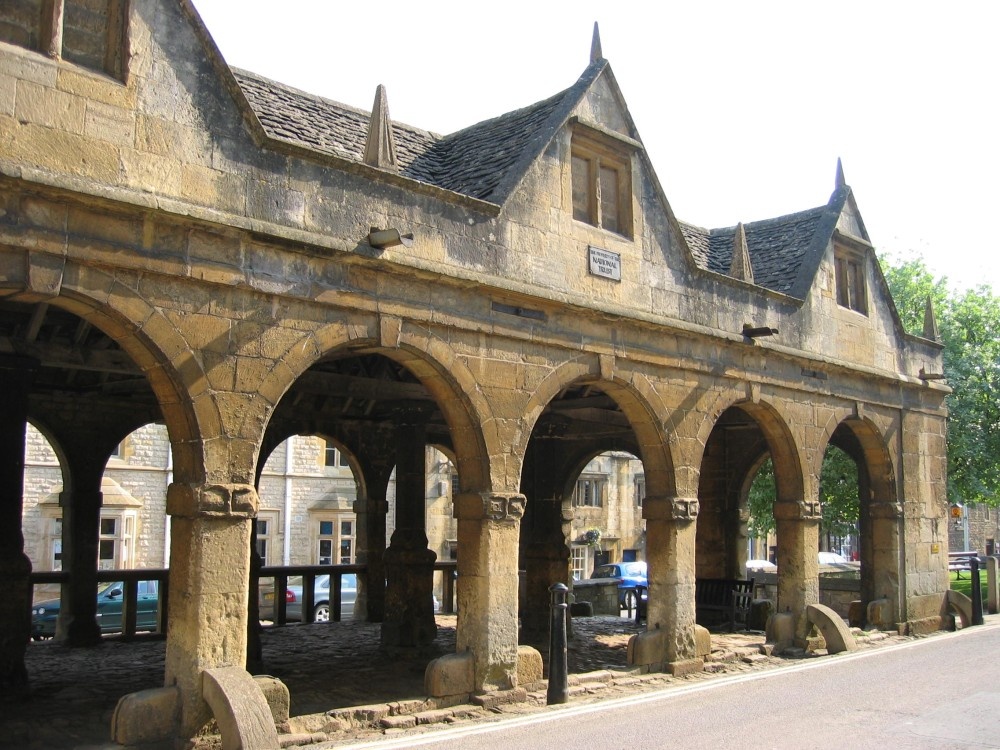
Market Hall, Chipping Campden, Gloucestershire - Image by PicturesOfEngland.com member William Bedell (view gallery)
Immediately appealing, this is certainly one of the most picturesque small towns in the northern reaches of the Cotswolds. The town bears all the hallmarks of the 14th and 15th-centuries when it was an important wool town and the wealthy merchants brought their fleeces to do trade at the exquisite 14th-century Woolstaplers Hall.
ID#314
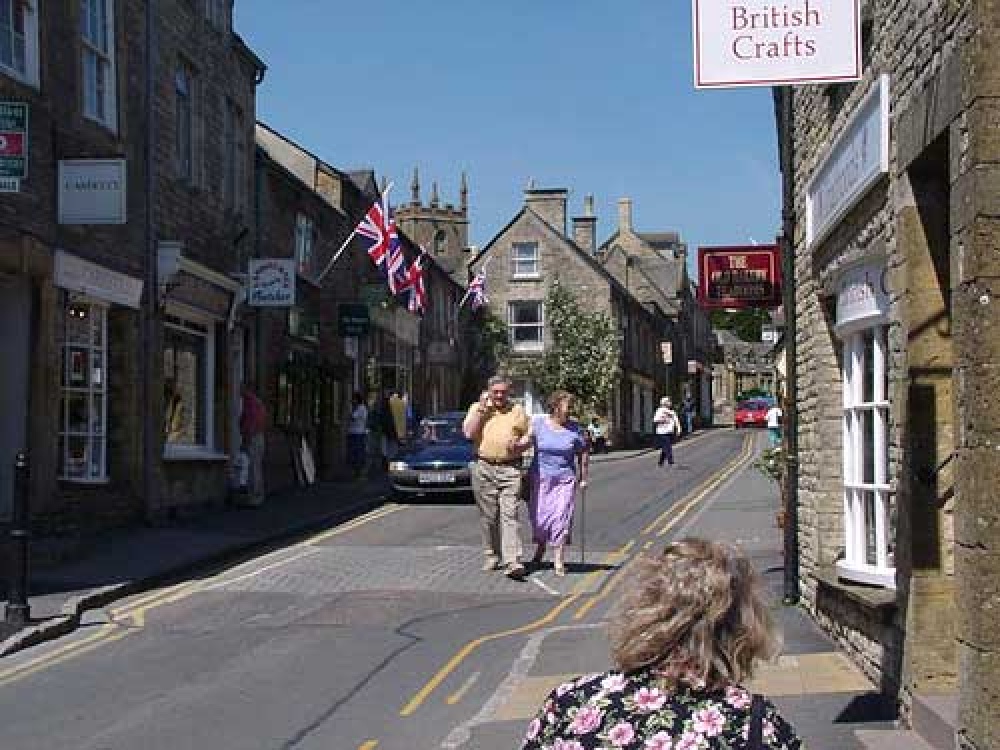
A picture of Stow on the Wold - Image by PicturesOfEngland.com member poe (view gallery)
Stow on the Wold is described by many as the quintessential Cotswold town, with visitors coming from the world over to explore this beautiful little market town set high on a hill along the Roman Fosse Way. Due to its location, where several major Cotswold roads converge, Stow is an ideal location to base yourself from when planning to explore the area, with other popular Cotswolds towns and villages within just a stones throw, such as Bourton-on-the-water, Upper and Lower Slaughter, Broadway, and Chipping Norton.
ID#72
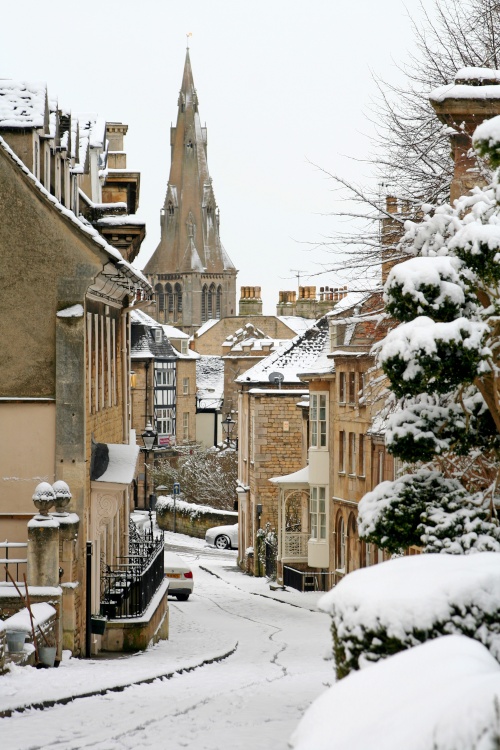
Stamford - Image by PicturesOfEngland.com member Zbigniew Siwik (view gallery)
Of the 17 churches, only 6 now remain in Stamford, which is without doubt, one of the finest medieval towns in the British Isles, if not in Europe. The town was first recorded in the Domesday Book as a Market town but there is evidence that ancient Britons dwelt here in the days before the Romans built their road through the town. The Normans built a castle here and history tells us that it was from here that a great army was assembled to march on Runnymede in an attempt to force King John to agree to the Magna Carta. Stamford is alive with reminders of a long and illustrious history. In the Middle Ages, Stamford was an important wool centre and it is thought that many of the town's most ancient and beautiful buildings were paid for by the generousity of the rich wool merchants.
ID#400
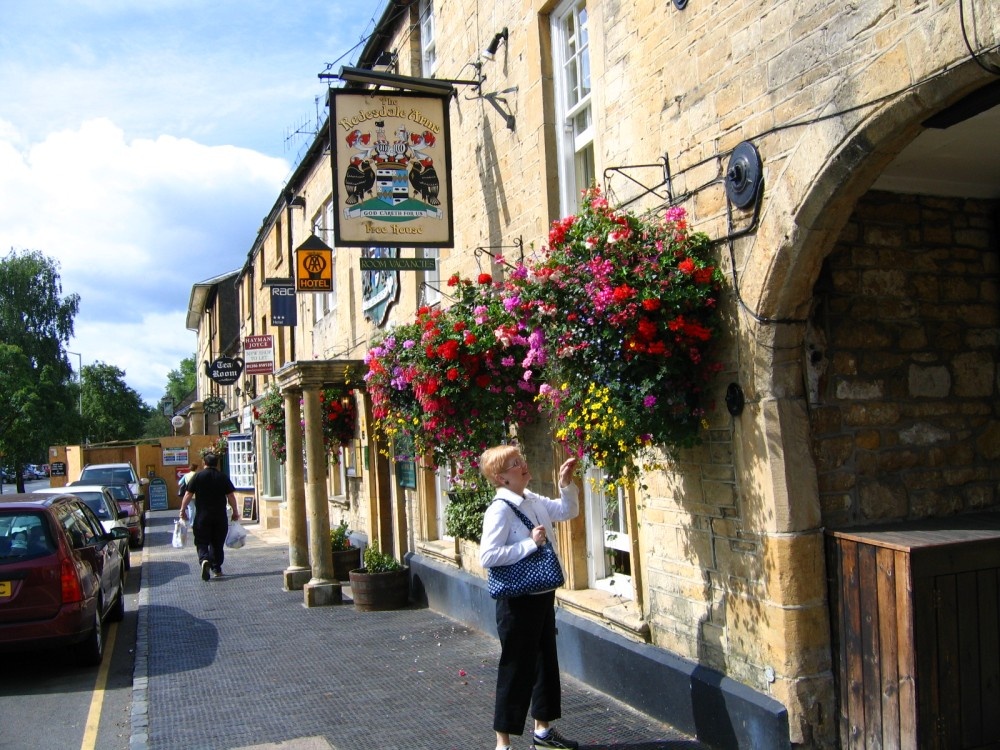
Moreton in Marsh - Image by PicturesOfEngland.com member John Earhart (view gallery)
The delightful market town of Moreton has welcomed visitors for many centuries. In it's prominent position on the Fosse Way it was an important staging post for travellers requiring to rest and change horses. The broad High Street has many elegant inns and houses that are characteristic of a town that developed in the great 'wool' trading days. In the narrow burrage plots and back lanes interesting houses and cottages huddle together in a mix-match of styles, unified by being built of glowing, honey coloured stone that belongs only to the cotswolds.
ID#493
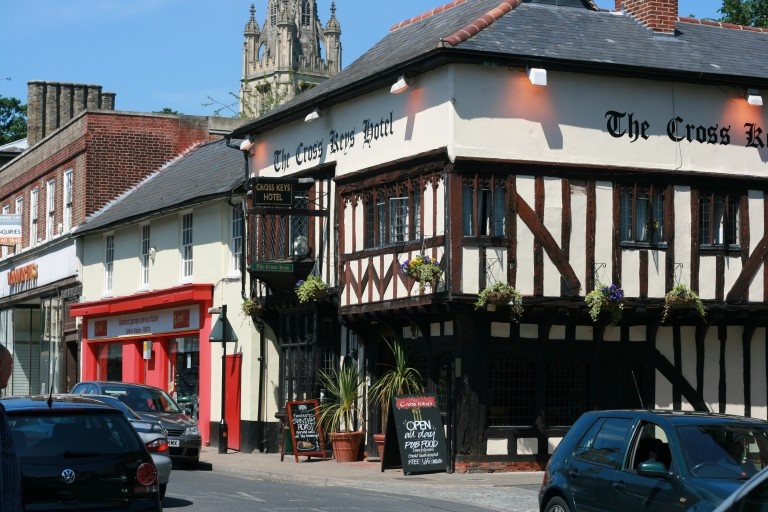
The High Street - Image by PicturesOfEngland.com member Kieran Simkin (view gallery)
The outstanding feature of Saffron Walden is its rich variety of properties tangled around its web of ancient streets. The centre of the town is built around a street plan unchanged since 1141 when Geoffrey de Mandeville established a market beneath his castle walls. All that is left of the castle is a few stumps standing on a grassy mound at the highest point of the town. Near to the castle is the largest turf maze in England, it is cut into the turf of the common, is circular and about 100 feet in diameter. The earliest record of the maze is 1699, it has been restored several times, most latterly in 1979.
ID#22359
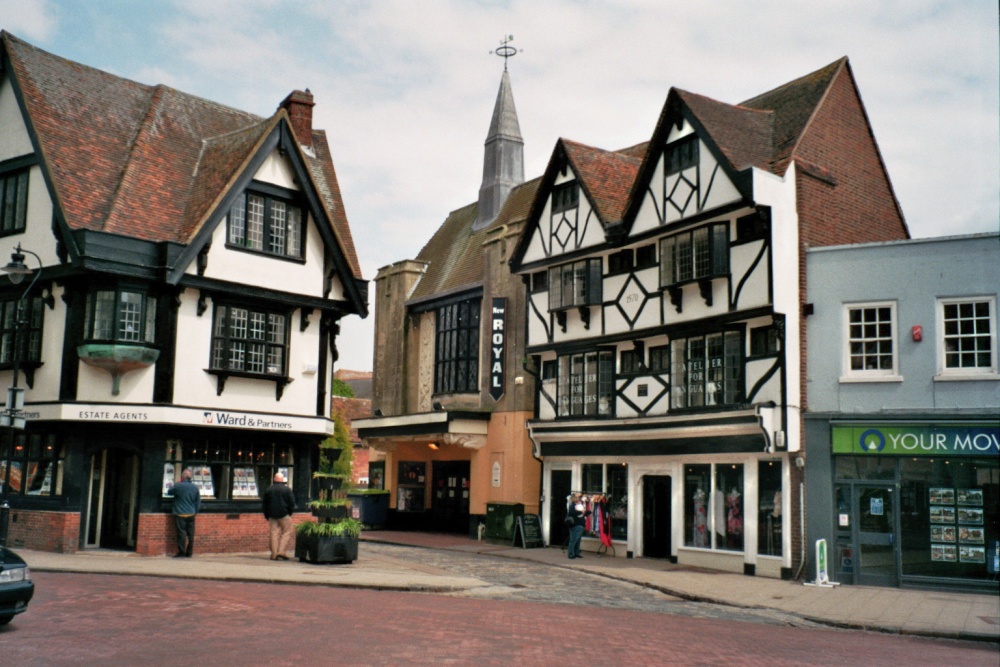
Faversham - Image by PicturesOfEngland.com member Fred In't Hout (view gallery)
There is record of settlements in the area in pre-historic times, and it is known that the Romans and the Anglo-Saxons both established villages. These flourished and by medieval times Faversham enjoyed considerable importance.
ID#28235
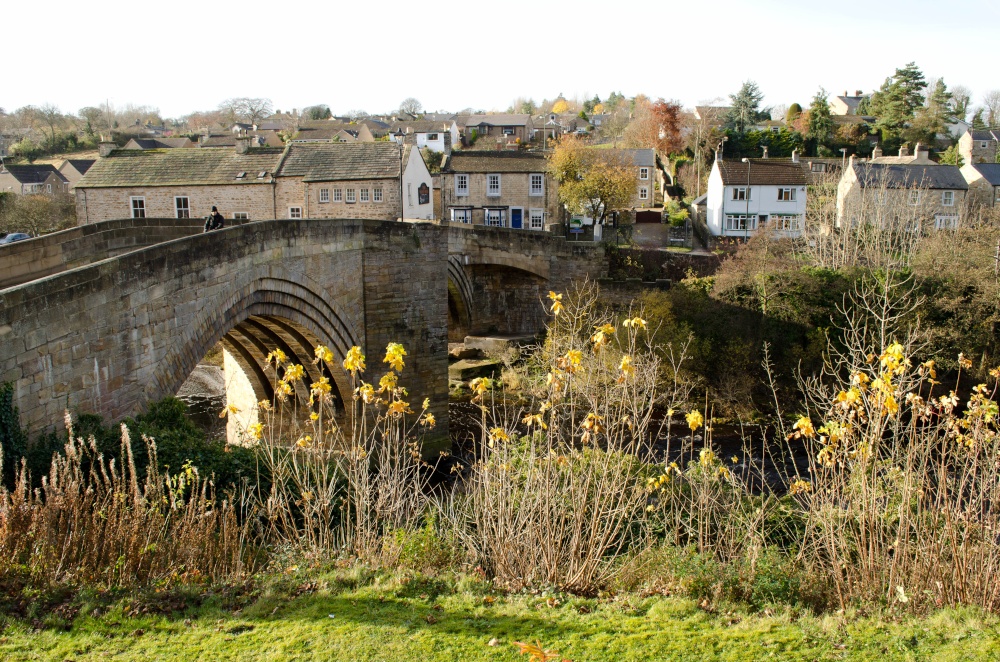
Barnard Castle - Image by PicturesOfEngland.com member Neil Mcshane (view gallery)
This fine market town gets its name from the great castle that stands on the edge of town - Barnard's Castle. The castle, which is now an extensive ruin but well worth a visit was first built around 1125 by Bernard Baliol, son of Guy de Baliol, who came over to England with William the Conqueror. The castle offers magnificent views over the Tees Gorge and surrounding area. On 2nd and third of July 2016 there is a special event being held here called 'Barnard Under Siege' which celebrates the 800th anniversary of the Teesdale stronghold successfully resisting a Scottish attack. Click here for more details and to receive a 10% discount on tickets purchased online (at time of writing - please check!).
ID#8611
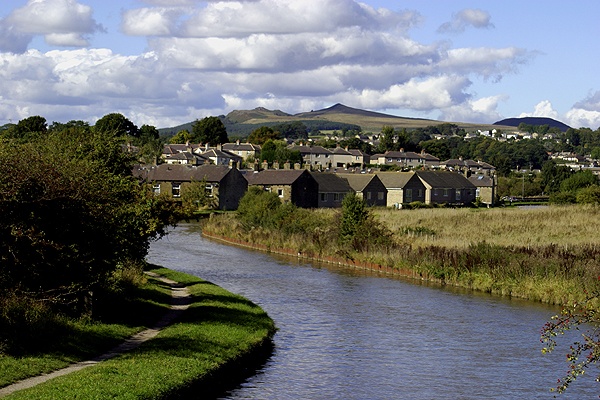
Leeds and Liverpool Canal, Skipton - Image by PicturesOfEngland.com member Tom Curtis (view gallery)
This lovely old market town is enclosed by fantastic scenery in all directions. Long considered "The Gateway to the Dales" which lye to the north, moors extend southwards, and the tranquil countryside of the Ribble Valley is to the west. It's other abiding features are the Leeds and Liverpool Canal which meanders lazily through the town, the historic Holy Trinity Church of which parts date to the 12th century and at the top of the main street stands Skipton's 900 year old castle.
ID#244
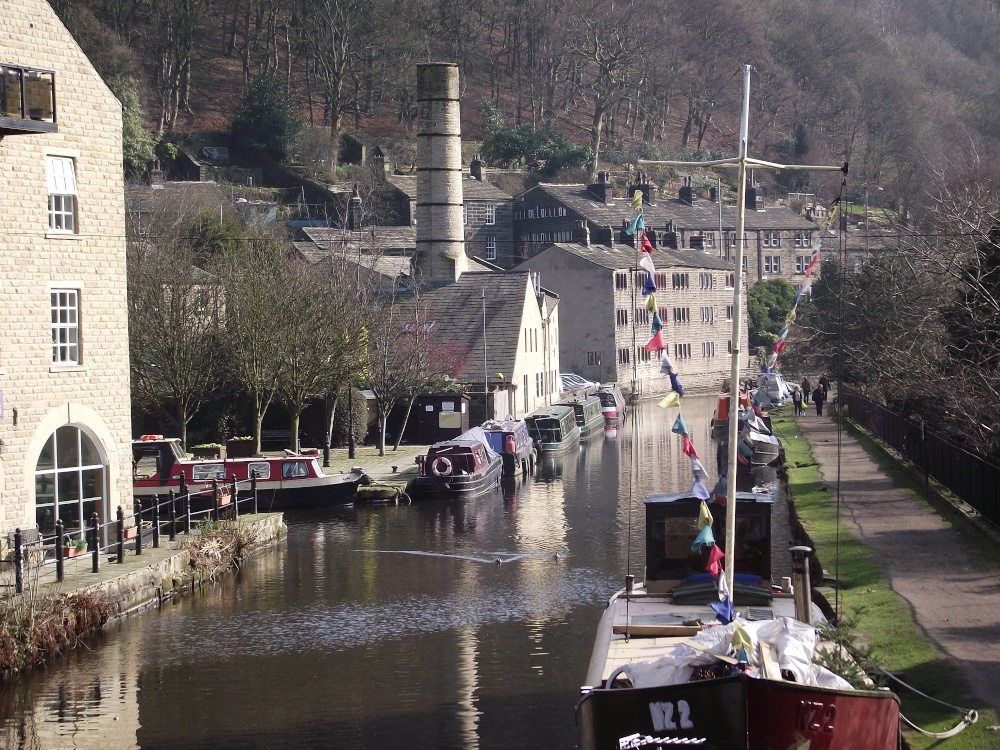
Hebden Bridge - Image by PicturesOfEngland.com member JauntyJane (view gallery)
This beautiful old town grew up close to the River Hebden at the point where a stone bridge was built as part of a pack-horse route in the 16th century. By the time of the 18th century Hebden Bridge had become a noted centre for weaving. Stone cottages appeared, these were especially built for weavers with wider than usual windows to allow for the maximum of light. In the 18th century it was commonplace for many workers in the textile industry to work at home, and it was only at the latter end of the century that mills began to be established in the town, bringing with them a much needed prosperity. You only have to cast your eye's above the crowded shop windows of the main streets, to note the flurry of building work which took place once more money was available. Some of these fine properties still show the lovely facades of yester-year. In the town is the Robin Hood, a coaching inn from the 17th century. The inn retains much of its earlier character, and is believed to have an old well from which St.Thomas a Becket took a cup of water.
ID#180
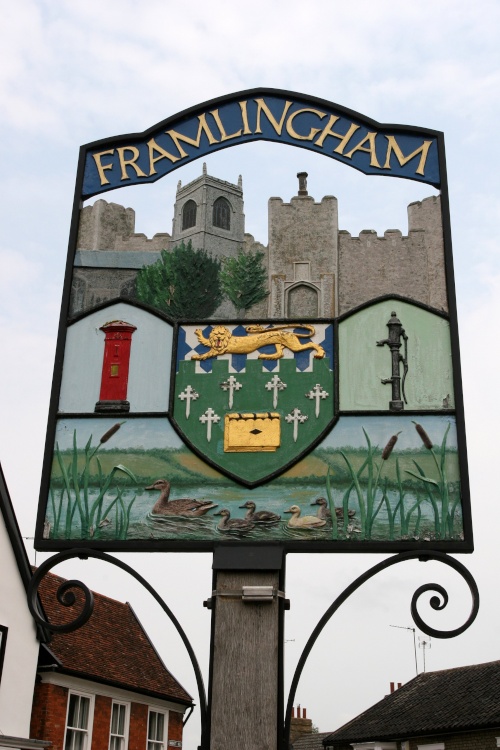
Town sign - Image by PicturesOfEngland.com member Richard Ainsworth (view gallery)
Framlingham has often been described as the finest Market Town in East Suffolk, and one of the best to visit in England.
ID#20514
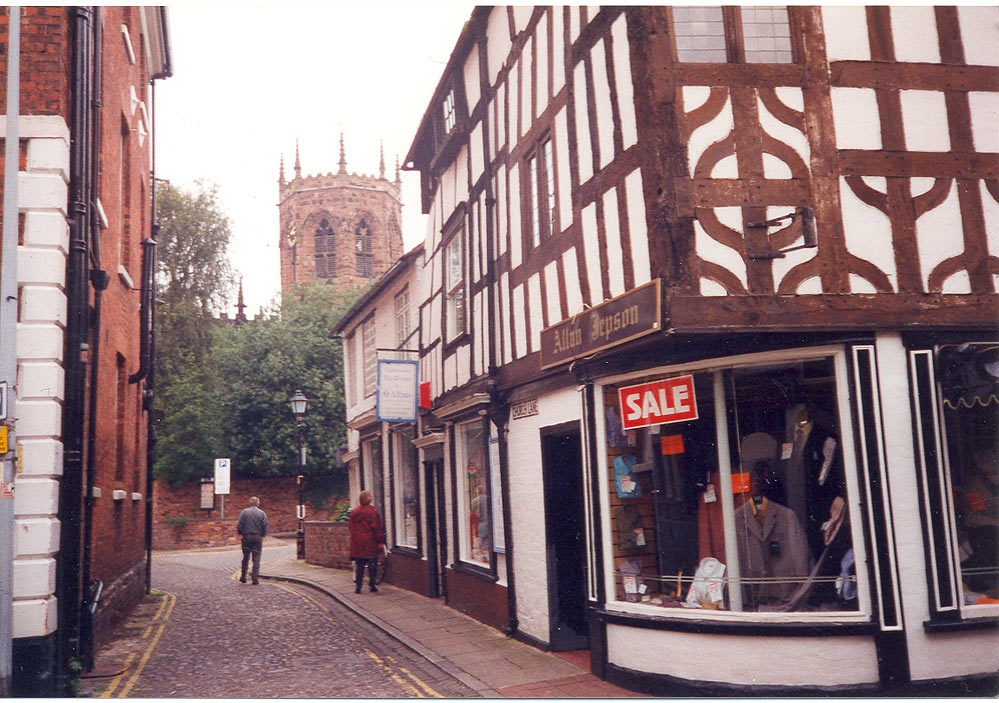
Nantwich, Cheshire - Image by PicturesOfEngland.com member Jean Hickmott (view gallery)
Nantwich is noted for cheeses, its once famous salt-works, and for its grand Elizabethan appearance. Many fine buildings belong to Tudor times are preserved in Nantwich, they were built following a fire which almost totally destroyed the town in the latter half of the 16th-century. The generousity of Queen Elizabeth Ist was to prove crucial in the rebuilding of the town.
ID#14749
| Article Title | Author | Date |
| Stonehenge | David Coe | 23rd January 2024 |
| Derwent Dam: A Historic Icon in the Heart of Derbyshire | David Coe | 14th January 2024 |
| The Native Trees of England: A Botanical Tapestry | David Coe | 15th December 2023 |
| Stoke-on-Trent: The Potteries Hub | David Coe | 12th December 2023 |
| England's 'Heritage at Risk Register' 2023 | David Coe | 11th December 2023 |
| 10 of the prettiest villages in the Lake District, Cumbria | poe | 16th March 2023 |
| Where to see Daffodil Displays in the South West of England | poe | 3rd March 2023 |
| 10 Famous Landmarks in Dorset | poe | 1st March 2023 |
| List of popular Dorset market towns including market day | poe | 1st March 2023 |
| 10 Best Historic Attractions to visit in York, England | poe | 16th May 2022 |